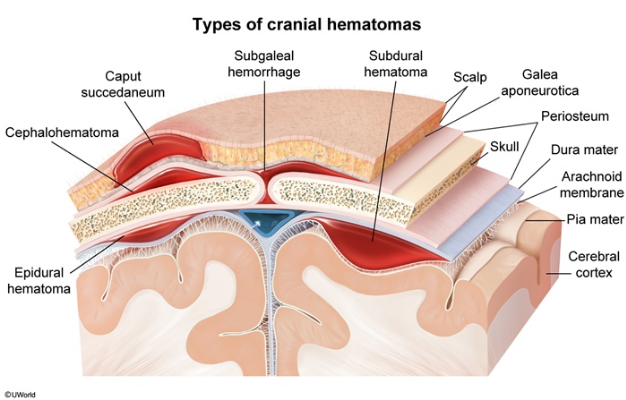cranial hematomas
- related: Pediatric

Caput succedaneum
Caput:
- path: subcutaneous, above periosteum, between skin and galea
- pt: pressure against dilating cervix in head first delivery (vertex), after prolonged labor or vacuum assisted delivery
- symptoms
- extend across midline/sutures
- poorly defined margins
- discoloration
- PE shows boggy region of scalp with pitting edema and ill defined borders that do not expand over time
- usually serous fluid but can have blood
- treatment: resolves over the first few days. Observe

Cephalhematoma
Cephalohematoma:
- path/pt: subperiosteum hematoma (rupture of blood vessels between skull and periosteum) caused by surgical trauma or can be vacuum/forceps. Most common parietal
- symptoms
- bulging head
- jaundice, hyperbilirubin from hemolysis
- rare: anemia, hypotension
- Do not cross suture lines. well demarcated
- Can calcify or ossify leading to skull deformation
- treatment: observe. Resolve in weeks to months

Subgaleal
Subgaleal
- path: bleed between galea aponeurosis and periosteum
- pt: vacuum apply to head in delivery.
- symptoms
- crosses midline
- rapid expansion of swelling can be fatal due to shock and massive blood loss
- treatment:
- ICU monitor with fluid replacement and CBC/coagulation study